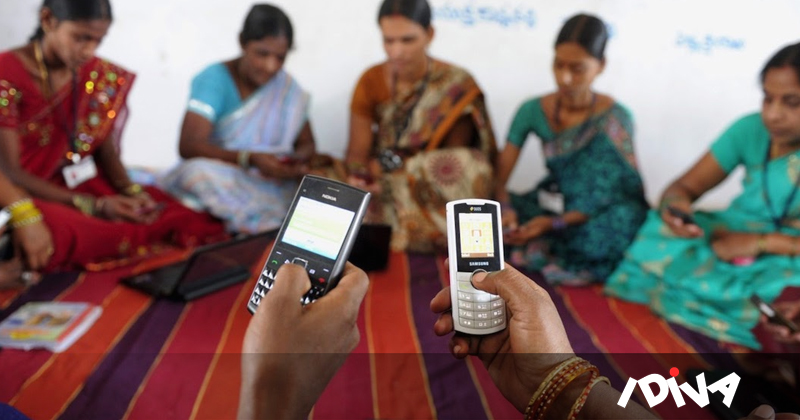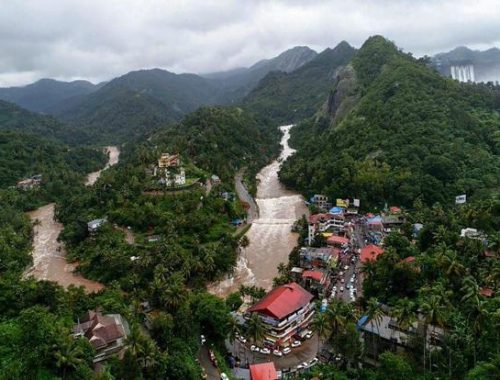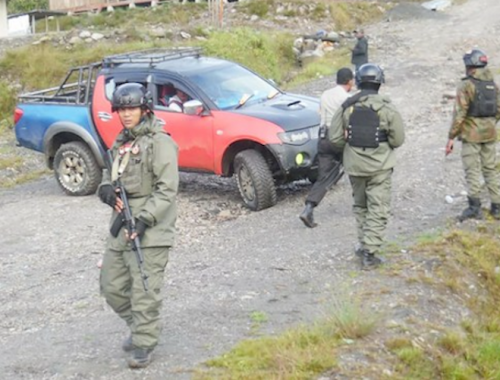As the Election Commission of India announced the poll dates of general election for 2019, it also clarified the role of social media in the elections. The ECI has said that the model code of conduct and its pre-certified political advertising rules will apply to the social media as well.
Chief election commissioner Sunil Arora reportedly said that all major social media platforms — Facebook, Twitter, Google, WhatsApp and Share Chat — are committed to accepting only pre-certified political advertisements, sharing expenditure on it with the Election Commission (EC) and adhering to the “silence period” that comes into effect 48 hours before the polls.
“All the provisions of model code of conduct shall also apply to the content being posted on the social media by candidates and political parties,” the EC reportedly said.
It has also reportedly decided to bring the bulk SMSes/Voice messages on phone and election campaigning through social media under the purview of pre-certification of election advertisements, just like electronic and radio advertisements.
For scrutiny, the district and state-level media certification and monitoring committees, which vet all electronic and radio advertisements during the model code period, will now also have a social media expert on board.
It was further announced that candidates will have to submit details of their social media account (if any) at the time of filing of nominations. The expenditure incurred on social media campaigning by them will be included within their limit of election expenditure.
Notably, even payments made to internet companies and websites for carrying advertisements and campaign-related operational expenditure on making creative content, salaries and wages paid to the workers employed to maintain their social media account, will have to be accounted for with the EC.
It is to be noted that the election expenditure ceiling is fixed at INR 70 Lakh for candidates contesting Lok Sabha elections, except in Arunachal Pradesh, Goa and Sikkim where it is INR 54 Lakh.
And to put it in context, Facebook’s data recently showed that BJP has already spent INR 2.37 Cr on Facebook ads as of February. The regional parties are at the second position have exhausted INR 19.8 Lakh while Congress has poured in INR 10.6 Lakh for advertisements.
In December 2018, Facebook had announced stricter controls to keep a check on the political advertisements ahead of the elections.
Facebook had ruled that an advertiser who wants to run an ad in India related to politics will need to first confirm their identity and location along with details about who placed the ad. It also launched its online searchable Ad Library for anyone to access. This library provides information about the person or group placing the ads.
The social media giants were also summoned by 31-member parliamentary panel where they told the social media companies they cannot operate like news mediawithout accountability.
However, the model code of conduct looks like a tough cookie to crack for social media companies which have a wide ranging presence across the country and may have a hard time controlling political misinformation across the country.
Media plays an important role in all democratic elections. On the one hand, it keeps voters informed about the priorities and programs of different political parties and candidates. Unless the voters know which candidate stands where on which issue they will not be able to exercise their electoral rights properly. On the other hand, media can also educate voters by providing them with a comparative analysis of relevant issues. Many have dismissed the above role of media as idealistic and unrealistic, arguing that the regular day-to-day reporting of events is full of ‘fake news’ and fails to meet the requirements of good journalism.
India has over 460 million internet users today, and this figure is sure to
rise to 635.8 million by 2021. Cheaper smartphones and a ballooning
telecommunications industry have together pushed the country to
experience this ‘digital high’.
One aspect where India shares the characteristics of other internet users
is its passion for social media. There will be an estimated 358.2 million social network users in India by 2021, from the 216.5 million in 2016.
This means that the share of the Indian population that access social
networks is expected to jump from around 16.35% to over 25%.
Accessing social media is one of the key reasons for people to access the internet. In fact, for many people accessing the
internet for the first time, social media was the reason they embraced the internet.
It’s addictive!
It has been observed that the use of social media produces the same effect as love in the brain by activating the chemical
dopamine. The jury is yet to find if social media can truly feed an addiction. Fenil Parikh, a psychologist says, “Being on social
media has become a daily habit for many, and for some, a lion’s share of the day’s attention.”
Statistics show that 28% of the internet users check their social media channels before getting out of bed in the morning. Teenagers (aged 15-19) who spend at least three hours a day looking at their social channels while the IMAI Report already says that 18% of the social media users can’t go more than a few hours without checking what’s
happening.
The convenience of sharing photos with friends (and non-friends) through social networking sites and blogs is undeniable.
Unfortunately, so are the dangers. Not only can photos be used by strangers, but many photos, especially those taken by
devices with GPS technology, contain tags that reveal exactly where the photos were clicked. To cite an example, if you stay in
a rental place alone and post a picture of yours, it’s possible for strangers to know where you live.
Note of caution
The illusion of privacy, safety and security in the digital world should be taken care of. Social media usage will continue to rise in 2017. The legalities concerning social media jurisprudence require more discussions and debate. There is an urgent need to protect women and children on social
media from unwarranted exposures and influences and cyber law needs to play a significant role in this
It’s true that the media have played an important role in politics since the First Amendment established freedom of the press as a cornerstone of American democracy. Voters need information to make educated decisions, and it’s journalists’ job to give it to them.
But can the media really alter the outcome of an election?
In addition to widespread voter fraud, which most experts agree would be impossible to accomplish, Trump is alleging the the election has been “rigged” through biased media coverage. Recent shifts in the media landscape have changed how the press interacts with candidates, campaigns and the voting public. And, at a time when trust in the media is at an all-time low, the fourth estate has come under fire from critics on both sides of the aisle for its coverage of the 2016 elections.
To find out what the research says about media’s evolving role in the elections process, we talked to three scholars from the UO School of Journalism and Communication.
1. To cover or not to cover

The first way journalists get involved in elections is by choosing which candidates to cover and how much. Those choices alone can have a huge effect on voter perceptions.
“As hard as it is to believe, the biggest thing that drives elections is simple name recognition,” said Regina Lawrence, executive director of the UO SOJC’s Agora Journalism Center and George S. Turnbull Portland Center. “Research has shown that some candidates can be literally left invisible because they can’t win enough interest from the media.”
Lawrence, a nationally recognized expert on political communication and the co-author of “Hillary Clinton’s Race for the White House: Gender Politics and the Media on the Campaign Trail” and “When the Press Fails: Political Power and the News Media from Iraq to Katrina,” said this effect was most noticeable during the Republican primaries, when Trump generated an outsized proportion of the media coverage.
“He was able to get the equivalent of massive advertising buys without having to spend much money,” Lawrence said.
For the media, this disproportionate coverage was driven more by economics than political bias. In a competitive 24/7 news cycle, news organizations publish stories that will drive traffic. And, thanks to his preexisting fame and ability to generate controversy, those stories were often about Trump.
Did all the free press make a difference? Because this year’s Republican primaries had such a large field, Trump’s ability to stand out in the crowd likely played a significant role in his nomination.
2. Bias, scripts and the polarization of America
Research reveals that many major media outlets attract partisan audiences, which reflects political biases in their coverage. Again, this phenomenon is motivated by business: Since today’s news consumers can get the basic facts from a quick internet search, many publications have differentiated themselves by shifting from straight news to context and analysis

Unfortunately, the media’s growing political schisms seem to be driving polarization in the populace as well.
“Selective exposure is the tendency many of us have to seek out news sources that don’t fundamentally challenge what we believe about the world,” said Lawrence. “We know there’s a relationship between selective exposure and the growing divide in political attitudes in this country. And that gap is clearly related to the rise of more partisan media sources.”
Aside from ideological bias, according to Lawrence, journalists across outlets also perpetuate biased views by distilling complex campaigns and issues into simplified “scripts.”
One popular election-coverage script is the “horserace” or “game frame” narrative. “We know from decades of research that the mainstream media tend to see elections through the prism of competition,” said Lawrence. “Campaigns get covered a lot like sports events, with an emphasis on who’s winning, who’s losing, who’s up, who’s down, how they are moving ahead or behind in the polls.”
The media also perpetuate character-based scripts. “For example, in 2000, the script for Al Gore was that he was a pompous bore, and the script for George W. Bush was that he wasn’t very smart,” said Lawrence.
In this year’s presidential race, the narratives that Clinton is a corrupt politician and Trump is a racist, misogynist outsider have dominated election coverage.
3. Social media: Echo chamber and direct line to the masses
According to a recent Pew Research Center study, 62 percent of Americans get their news via social media platforms. What they might not realize is that the news they see is heavily filtered.
“What we see on Facebook is dictated by algorithms that decide what you see based on what you like and dislike, what you comment on and click on,” said SOJC Assistant Professor Nicole Dahmen, who researchesand blogs about visual communication and social media in politics. “Rather than getting a diversity of perspectives that contribute to political discourse, we see an echo chamber.”
On the other hand, social media gives users more direct access to candidates than ever before. “With social media, voters may believe they have an intimate relationship with a candidate they will probably never meet in person,” said Lawrence.
And candidates have unprecedented control over the images they present. “Social media allow candidates a direct means by which to communicate with the voting public, thereby bypassing the news media as a gatekeeper,” Dahmen said.
4. A picture is worth 1,000 words
For most people, visuals carry an even more powerful impact than words on a page.
“Visual communication research has shown that images, especially of political candidates, convey emotions, actions, realism and credibility,” said Dahmen. “These images form a lasting impression in the mind of the voting public.”
The photos news organizations choose to publish and such factors as their size and layout can also influence voter perceptions — and reveal possible bias.
“Look at how different newspapers across the country presented the story of the nomination of Hillary Clinton as the first female candidate from a major party,” said Dahmen. “Some led with a dominant photograph of Hillary that positioned her in a favorable light. Some led with an image of her husband. And other newspapers led with an image of Donald Trump.”
Published images also become part of the permanent record preserved on the internet. “Trump may claim he didn’t mock a reporter with a disability,” Dahmen said, “but we have evidence in the form of a video and photographs showing that he did.”
5. Data journalism: Fact-checking, polls and the self-perpetuating cycle

Once considered the least glamorous part of a journalist’s job, fact-checking has come into vogue with help from new tools that make verification faster and more accurate.
“Organizations like PolitiFact and Factcheck.org are doing good-quality journalism that isn’t just following the new, shiny story of the day,” Lawrence said. “They’re asking tough questions about what candidates are saying and testing them against the available record. But because of selective exposure, research suggests fact-checks will not necessarily change somebody’s mind.”
While fact-checkers focus attention on the candidates’ stands on the issues, data analysis tools can perpetuate the media’s heavy attention on the horserace.
“One of the most notable developments in the data journalism space are tools to make predictions about the outcomes of elections,” said Damian Radcliffe, the SOJC’s Carolyn S. Chambers Professor of Journalism and co-editor of “Data Journalism: Inside the Global Future.” “The most prominent example of this is the work done by Nate Silver at FiveThirtyEight.”
Much of the data Silver crunches come from polls, one of the most common topics of election coverage. “Polls influence voter perceptions,” Lawrence said. “And we know that how candidates are doing in the polls can then influence the type of coverage they get.”
The media flock to the front-runners. And the more coverage those candidates get, the higher they tend to climb in the polls — a dynamic that can turn into a self-perpetuating cycle.
6. Watchdogs of democracy
As of this writing, the story of the 2016 elections is not yet complete — and neither is the media’s role in it.
“Given the claims Trump has been making about rigged elections, I expect journalists to watch voting very carefully,” said Lawrence. “Of course, that’s a very large task with so many polling places across the country.”
To face that challenge, ProPublica has launched Electionland to cover “access to the ballot and problems that prevent people from exercising their right to vote.” The SOJC is one of 13 J-schools nationwide participating in the project.
“Around 85 students have volunteered to participate in a special newsroom on Election Day,” said Radcliffe, faculty lead for Electionland. “We’ll be monitoring social media to find interesting stories of things happening across the West Coast. If we find issues people are talking about, we’ll try to verify. And if necessary, we’ll escalate them to the newsroom in New York to be explored in more detail.”
At least one thing hasn’t changed: Monitoring the workings of power to deliver the full story to the people is still the most important part of the journalist’s job description.




